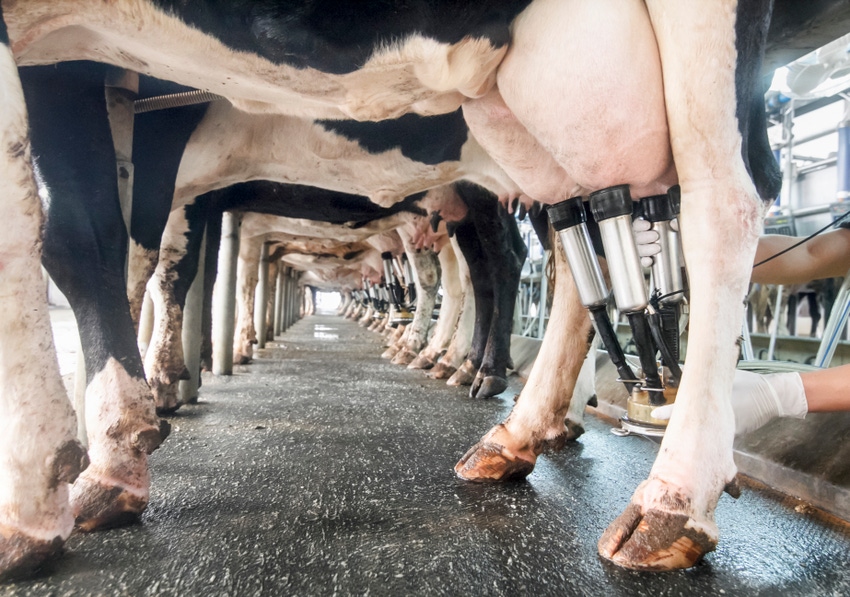Milk prices expected to strengthen in second half of 2020.

The U.S. Department of Agriculture recently released its latest "Milk Production" report, showing that milk production in the 24 major states during March totaled 18.3 billion lb., up 2.4% from March 2019. Revised production for February, at 17.0 billion lb., was up 5.6% from February 2019. The February revision represented a decrease of 7 million lb., or less than 0.1% from last month's preliminary production estimate.
Production per cow in the 24 major states averaged 2,072 lb. for March, 34 lb. above March 2019. The number of milk cows on farms in the 24 major states was 8.85 million head, 64,000 head more than March 2019 and 5,000 head more than February 2020.
Milk production in the U.S. during the January-to-March quarter totaled 56.0 billion lb., up 2.9% from the year-ago period. The average number of milk cows in the U.S. during the quarter was 9.37 million head, 27,000 head more than the October-to-December quarter and 26,000 head more than the same period last year.
“We’ve had so much change over the last two weeks; I don’t even know where to start,” Mark Stephenson, director of dairy policy analysis at the University of Wisconsin-Madison, said during a monthly update.
Joining Stephenson was University of Wisconsin-Madison professor emeritus Bob Cropp, who said the latest numbers show large milk production increases.
“I think farmers looked at the last quarter of last year. Milk prices looked good, and it looked like we were going to have a good year coming up. We did see some expansion and growth here,” Cropp said.
“We’ll see how it responds with the crash of milk prices,” he added.
In addition to the crashing prices, Stephenson relayed that several organizations, from cooperatives to proprietary firms, have said they will only take a certain amount of milk production.
“There are going to be imposed restrictions, and I think the financial market is also going to claim some restrictions,” he said.
Meanwhile, USDA’s latest "Cold Storage" report did hold some surprises, as cheese volumes were higher.
“If you take a look at American cheddar, that was actually down compared to last year and last month. I’m a little surprised by that,” Stephenson said.
Cropp said there is still a lot of cheese, “but at least it was a downward direction.”
Butter stocks were a different story, with the latest report showing a 3% increase.
After nearly two years of being in the $2.00/lb. range, CME spot butter prices have fallen to nearly a $1.00/lb., Cropp noted.
CME spot cheddar prices are also near $1.00/lb., a level not seen since the beginning of the 2000s, Stephenson said, adding that these prices have moved a “really, really long way.”
Cropp said Class III milk prices are likely to approach $11/cwt. in May, down from the current level of $13.30/cwt. in April.
From the end of January until now, Stephenson said there has been about a $6.00/cwt. drop in Class III and Class IV futures prices.
Where prices go will depend upon how fast milk production slows, when the economy reopens and what export levels are as the year unfolds, Cropp said, adding, “We’ll see some strengthening in the second half; how much is the uncertainty.”
About the Author(s)
You May Also Like



.png?width=300&auto=webp&quality=80&disable=upscale)

